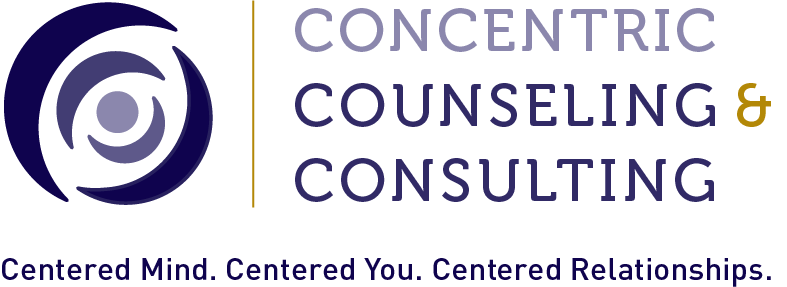Where’s My Person? Complexities of Adult Friendships
/By Concentric Counselor Kelsey Lamm Rottmuller, LPC, NCC
How do I feel by the end of the day? / Are you sad because you're on your own? / No, I get by with a little help from my friends — With a Little Help from My Friends | The Beatles
There isn't anything I wouldn't do for you / We stick together and can see it through / 'Cause you've got a friend in me — You’ve Got a Friend in Me | Randy Newman
If you wanna be my lover, you gotta get with my friends / (Gotta get with my friends) / Make it last forever, friendship never ends — Wannabe | The Spice Girls
And as our lives change / Come whatever / We will still be / Friends forever — Graduation (Friends Forever) | Vitamin C
Having come of age listening to song lyrics like these, and wistfully witnessing the implausible but admirable portrayal of kinship in the 90s sitcom Friends, I, like many adults, developed certain ideas and expectations about friendship. For example, I grew up believing one should have a best friend and know how to not only make friends but keep those friendships thriving into adulthood.
But what happens when making friends isn’t as simple as swapping parts of your lunch with a classmate, or performing in the school play together? Even in college, school and extracurricular activities provided fertile ground in which the seeds of friendship could blossom, helped along by common interests and schedules structured around shared classes. Once the structured environment of school is removed and we are left to choose our own adventures, the work of maintaining and definition of friendship seems to dramatically shift for many adults. What perhaps once came relatively easily, now actually takes planning, work, and dedication.
In her Psychology Today article 5 Lies About Adult Friendships, Dr. Miriam Kirmayer unpacks and debunks commonly-held myths about friendships in adulthood. Primarily among these is that “by early adulthood, we should know how to make friends and handle the challenges that come with these relationships; that these are skills we learn early in childhood and adolescence, and that by the time we leave college or even high school, we should have it ‘figured out.’ The problem is, not only is this belief untrue, it can make us feel like we’re the only person who struggles and leaves us feeling disappointed, ashamed, or alone. This, in turn, makes it much less likely that we will reach out for guidance or support if (or when) we do struggle.”
The Struggle is Real
I’ve heard from clients, colleagues and compadres alike how challenging it can be to keep friendships alive, reciprocated, and not feeling like one more thing on a never-ending to-do list. Despite all the best intentions, life as an adult becomes increasingly busy as we fill our time with work, family, continued education, and expanding responsibilities. People move away, start families, follow jobs and hustle hard to build a life. This can leave little time and space for what feels like the luxury of friendship.
A friend from college once told me (before moving away and starting a family) that “being friends as an adult means you take turns texting each other ‘we should get together soon’ repeatedly until you die.” While that statement seemed morbid and pessimistic at the time, it also resonated with me as one of the many struggles faced in adult friendships. Everyone is so busy. Not spending time investing in and invigorating friendships can simultaneously feel like an uphill battle and a source of regret or shame.
Then there are those ‘rites of passage’ in adulthood that can make the lack of a best friend or even close friends acutely apparent. In the 2009 buddy/romance film I Love You Man, we see played out the challenge that can arise when one finds a partner to whom they want to commit but struggles to identify a platonic companion to stand by their side. This film has come up in my work time and again when discussing the loneliness and isolation experienced by clients who struggle similarly to identify close companions outside of family or casual work acquaintances. But why do we feel so driven toward close friendships? Why doesn’t simply having a safe, stable life, perhaps even shared with a romantic partner seem like enough?
The Psychology
In his Psychosocial Development Theory, ego psychologist Erik Erikson posited that young adults (defined by Erikson as ages 19-40 yrs) enter the Intimacy vs. Isolation (Sixth Stage) of development, in which they seek to resolve developmental conflicts related to emotionally intimate relationships. These relationships may be romantic and/or platonic in nature. Erikson believed that failure to resolve said conflicts by establishing close relationships could result in an experience of isolation and loneliness. According to the psychology, this sharing of self with others drives not only our romantic partnering, but also our urge to host a game night, share a multi-hour brunch, or schedule that phone call to dissect the latest Star Wars movie with our World of Warcraft guild buddy.
Psychosocial theory also suggests that a strong sense of self enables us to form intimate interpersonal relationships. Hence, feeling disconnected or unclear about our identity during adolescence - who am I? - can contribute to the struggles faced when striving for friendships as young adults. Sequentially, failure to master the formation of lasting relationships can then additionally hinder us from ‘making our mark on the world’, which is the major task of Erikson’s Generativity vs. Stagnation (Seventh Stage) of development (ages 40-65 yrs).
With each developmental stage building or even hinging upon the completion of its predecessor, it makes sense that we would feel pressure to create and maintain friendships even if we are not sure why or tend to err on the side of introversion. How can I ever Pass Go and Collect $200 – or more so – contribute to the world at large and create greater fulfillment, if I don’t have any close friends?
What Can Be Done?
First and foremost, know that you are not alone. As Dr. Kirmayer notes, it is far from uncommon to struggle with friendship as an adult. Often times, our self-imposed beliefs about how a friendship should look, or roles we are meant to play as friends get in our way more than they motivate growth. If you notice yourself falling prey to the ‘shoulds’ and ‘have-tos’, it can be helpful to challenge and reframe those beliefs, by replacing “I really should call my college roommate back” to “I want to call them, I miss our connection”. Chances are, your friends are equally as busy and will be equally as understanding and appreciative to hear from you – even if just for a quick 10-minute catch-up while you finally fold that pile of clean laundry that’s been staring you down from atop the dresser for the past week. Small steps are ok.
A quick “I’m thinking” about you text – or even better, an actual card via snail mail still tells someone they are thought of and valued. It also goes much further than a “like” on social media or racking yourself with guilt to sustain the friendship. Lean into what brings you together rather than what pulls you apart. Did you first bond over a mutual love of quirky 80’s movies? Maybe it’s time for a movie night. You can debate the most quintessential piece of John Hughes’ filmography or how well or not The Breakfast Club translates to a post-baby-boomer demographic rather than bemoaning how you never see each other anymore despite living less than 30 minutes apart. It doesn’t have to be expensive. If going out for dinner or drinks is not in the budget while you save for a down payment on that first home or even just tickets to that music festival you’ve been pining for – perhaps split the cost of ingredients or encourage BYOB and host a make-your-own-pizza kind of night.
Finally, if you find yourself struggling with emotional intimacy in general or feel paralyzed by social anxiety or depression, consider reaching out to a trained therapist or a support group. There are those that want to help, if we let them and can find the courage to ask. It takes strength to reach out for help and trust someone – friend or otherwise – in which to confide.
Thank you for being a friend
Traveled down a road and back again
Your heart is true, you're a pal and a confidant
—Thank You for Being a Friend | Andrew Gold








